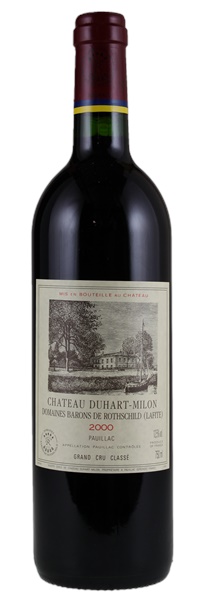Estimate

...notes of lead pencil intermixed with wet stones, black currants, and a certain leafiness. Medium to full-bodied, ripe, and dense, but tightly-knit, with considerable tannin...
Loads of plum, tobacco, meaty and cedary character on the nose. Full-bodied, with lots of chewy tannins and a long, luscious finish.
...crisp bouquet of brambly black fruit, truffle, freshly rolled tobacco and just a touch of mint. The aromatics here are impressive and exude Pauillac class. The palate is medium-bodied with suppler tannins than the aromatics augur, and austere but quite deep in the mouth, suggesting burnt toast and tobacco. Black pepper surfaces toward the finish, which lingers nicely with just a slight bitterness. Very fine.